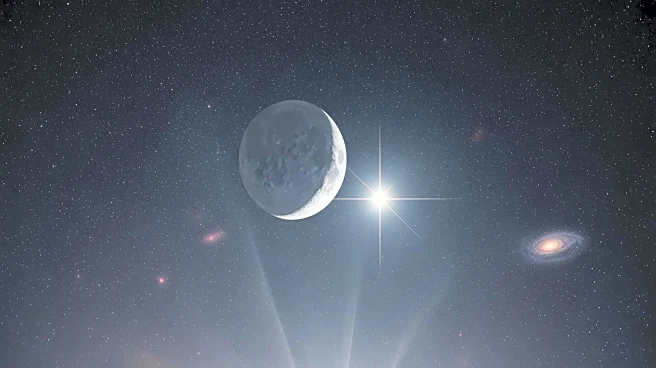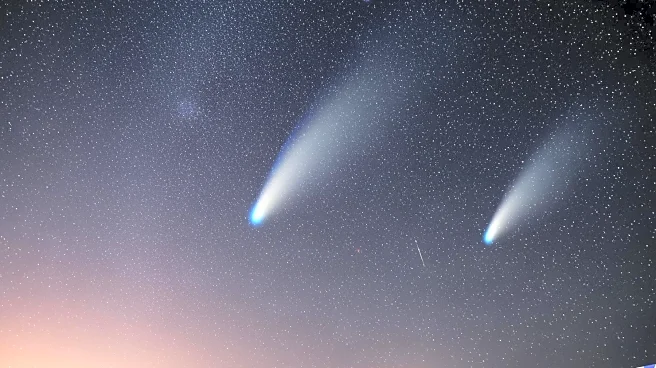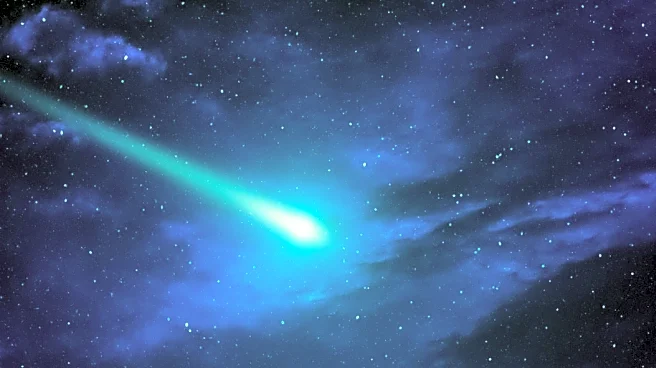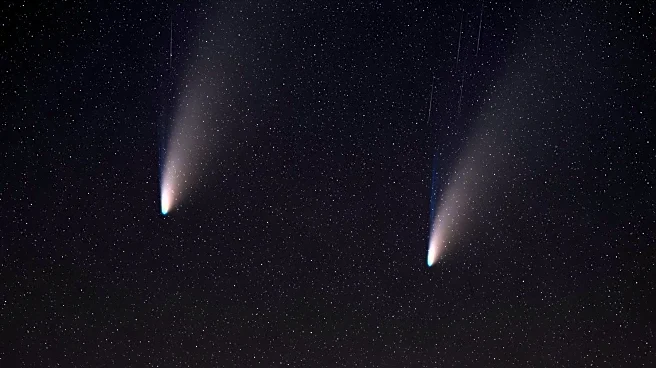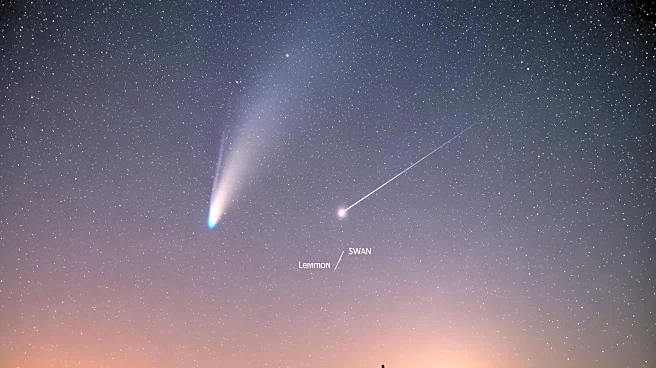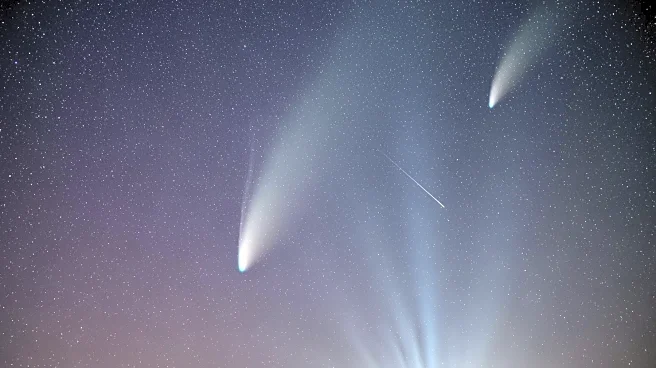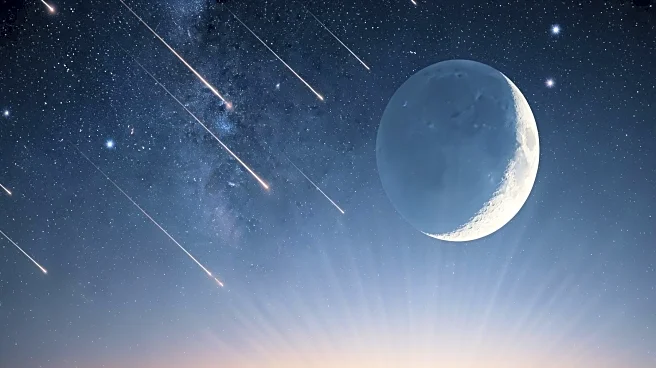What's Happening?
On October 24, 2025, the Moon will pass close to the red giant star Antares in the constellation Scorpius, offering a striking visual event for skywatchers. The conjunction will be visible low in the southwest
sky approximately 40 minutes after sunset. Observers may also catch a glimpse of the Teapot asterism in Sagittarius nearby. The event provides an opportunity to observe earthshine on the Moon, where sunlight reflected off Earth illuminates the Moon's surface. Additionally, on October 25, observers on the U.S. West Coast can witness Io and Europa casting shadows on Jupiter's cloud tops before sunrise.
Why It's Important?
Celestial events like the Moon-Antares conjunction and the shadow transits on Jupiter offer valuable opportunities for amateur astronomers and the public to engage with astronomy. These events can enhance public interest in space and science, providing educational moments for schools and science enthusiasts. Observing such phenomena can also foster a greater appreciation for the night sky and the importance of preserving dark skies amidst increasing light pollution.
What's Next?
Skywatchers are encouraged to use binoculars or telescopes to enhance their viewing experience of these celestial events. The Moon's proximity to Antares and the shadow transits on Jupiter are part of a series of astronomical events occurring this month, including the visibility of Comet Lemmon and Comet SWAN. Observers should continue to monitor the night sky for these and other upcoming events, taking advantage of clear skies and minimal light pollution.
